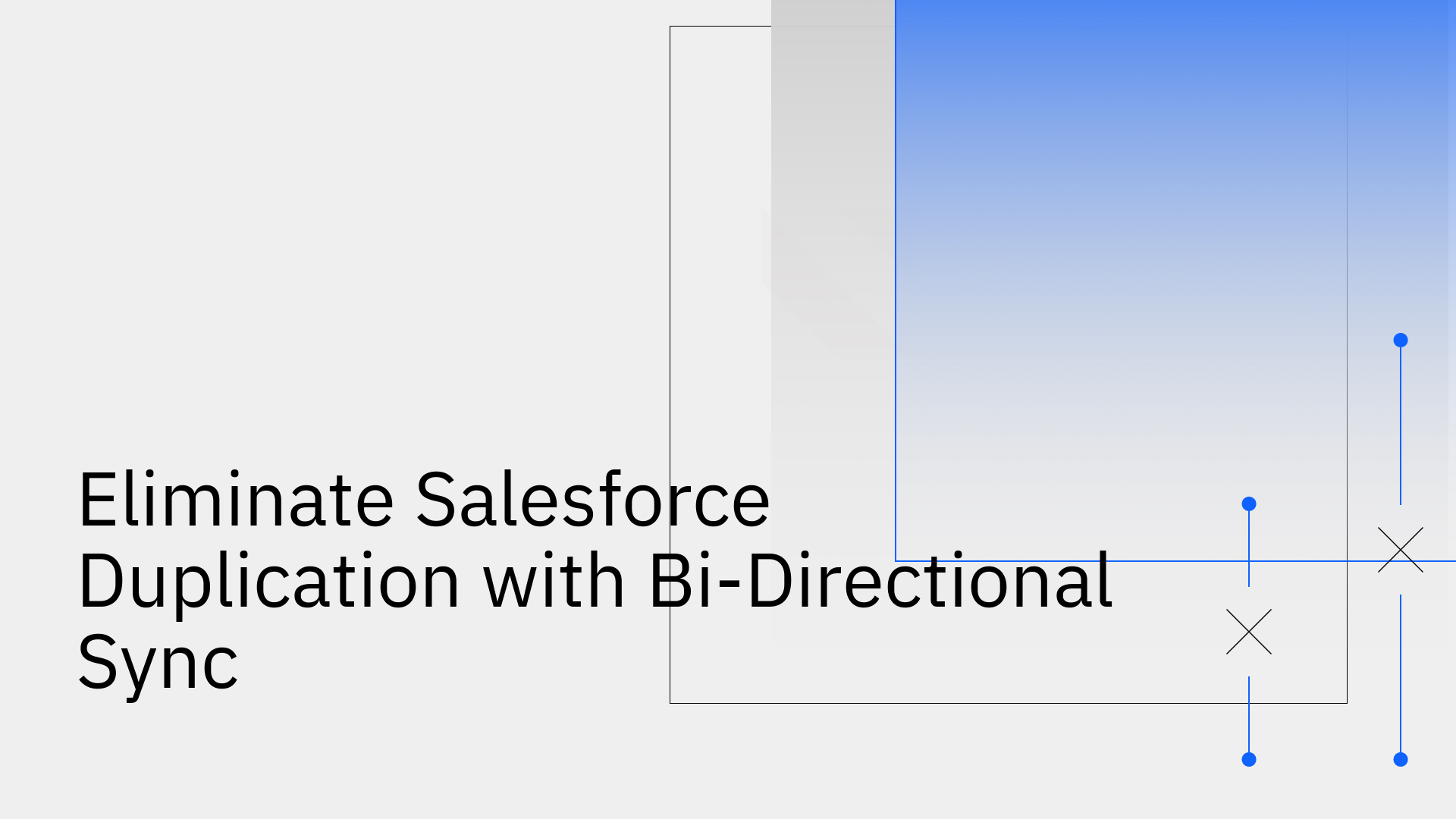
Salesforce data duplication is a common and costly problem. When you have multiple copies of the same record, it creates confusion, leads to wasted resources, skews your analytics, and ultimately damages the customer experience.
The modern, effective solution is to stop these issues at the source. Bi-directional sync is the technology that ensures your data is clean and consistent across all connected systems, eliminating duplicates before they ever become a problem.
Duplicate data is far more than a minor annoyance; it carries a significant financial weight that can impact revenue, productivity, and your company's reputation.
Poor data quality has a direct and severe impact on your bottom line. It is estimated that bad data costs companies an average of $15 million each year and can slash revenue by up to 25% [1]. On a larger scale, the U.S. economy loses an estimated $3 trillion annually due to poor data quality, highlighting this as a critical business challenge [2].
Your teams also pay the price for bad data. Instead of focusing on revenue-generating activities, inside sales reps can waste valuable time dealing with inaccurate records [3]. For sales and marketing, this translates into inefficient lead routing, misinformed conversations with customers, and wasted budget targeting the same contact multiple times.
Duplicate records directly harm the customer experience. Imagine a customer receiving multiple, conflicting marketing emails or a support agent who can't see a customer's full interaction history because it's split across duplicate records. This erodes customer trust and makes your company appear unprofessional and disorganized [4].
To solve data duplication, you have to understand where it comes from. While manual mistakes play a role, the biggest source of salesforce data duplication issues is often your own tech stack.
Duplicates are created in several ways: simple manual entry errors, messy bulk data imports from spreadsheets, and, most significantly, disconnected application integrations. In fact, API integrations are a leading cause, with some studies showing that new data entering a CRM via an API has a duplicate rate as high as 80% [5]. This is a common issue when integrating systems like NetSuite, which can lead to failing integrations and widespread data conflicts.
Salesforce offers built-in features to manage duplicates, but they have their limits. These tools are decent at flagging potential duplicates that are already inside Salesforce, but they are reactive. They struggle to resolve conflicts with external systems in real-time, meaning they clean up messes rather than preventing them. This often falls short of the robust duplicate reporting process needed to maintain clean data [6] [1].
Using one-way syncs can make the problem worse by simply pushing duplicates from one system to another. And manual cleanup is a temporary, labor-intensive fix that doesn't address the root cause, so duplicates just keep coming back. These outdated methods fail to solve the common sync problems that create data chaos in the first place.
The only way to permanently solve data duplication is to stop it from happening. This is where real-time, bi-directional synchronization offers a true, lasting solution.
Bidirectional (or two-way) sync is a process that allows data to flow in both directions between Salesforce and another system, like an ERP, database, or marketing platform. It creates a single, unified source of truth by ensuring that any change made in one system is instantly reflected in the other. This process gets rid of the CRM data lag that causes inconsistencies.
The process is powerful yet simple. When a new record is about to be created in any connected app, the sync platform first checks Salesforce to see if a record already exists based on rules you define (like a matching email address). If a match is found, the system updates the existing record instead of creating a new one. This proactive approach is key to eliminating duplicate records before they even exist.
Stacksync is an enterprise-grade platform built for real-time, bi-directional data synchronization. It tackles the root cause of data duplication by creating a seamless and automated flow of information between Salesforce and all your other critical business applications.
Our platform gives you the tools you need to maintain a duplicate-free database:
Salesforce data duplication is a costly problem, but it's one you can solve. By moving away from manual cleanups and embracing a proactive approach, you can maintain a single source of truth across your entire business. Real-time, bi-directional sync is the answer, and Stacksync provides the scalable and reliable platform to make it happen.
Ready to achieve perfect data consistency? You can book a demo or start a free trial with Stacksync today.